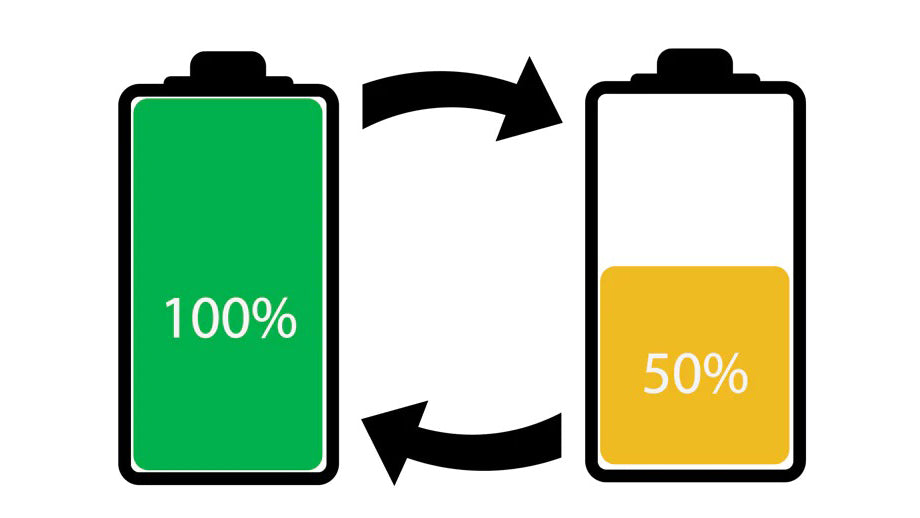Depth of Discharge is how much energy is discharged from the battery before it is charged to 100% again. A common measurement is battery cycle life, at 50% D.O.D (Depth of Discharge).

A 50% DOD the battery has 50% of its energy capacity discharged before it begins charging again. This is common in an off-grid solar situation - during the day the sun charges the battery, then after sunset the energy stored in the battery is used to power appliances.

As the battery goes through more charge/discharge cycles, it begins to degrade, and the amount of energy the battery can hold decreases. So, even though the battery is fully charged, it doesn’t hold as much charge as when the battery was new. Most batteries are rated by the amount of cycles it takes before the battery can only store 60% of the energy it could when it was new - this is the battery cycle life.
If we assume we are using the battery in an off-grid solar installation (where the battery charges during the day and is discharged when the sun is down), we can estimate how long the battery will last for.
This graph compares how many charge cycles with a 50% DOD before the battery reaches 60% of its original capacity.

The amount of cycles the battery can handle also depends on how much you discharge it each cycle. If you only discharge it by 30%, the cycle life is much longer compared to 50% discharge, as shown in the graph below.

Knowing the recommended Depth of Discharge for your batteries is important, for both warranty and longevity purposes. If we use our Gel Lead Acid batteries as an example, they should only be discharged to 50%. This is because discharging them past this point can shorten their lifespan significantly.
It's also important not to leave the batteries partially discharged, as this will also shorten their lifespan significantly. If the batteries are being used, making sure they are recharged fully each day (or within a couple days in weather is preventing it) will keep your warranty intact and batteries in good condition. Unused batteries will gradually lose charge, so we recommend charging unused batteries every 3 months to keep them in good condition.
Lithium batteries act slightly differently than Lead Acid - they can be discharged to 80% happily, and can be left partially charged for longer without being damaged.
At GridFree we offer both types of batteries: the standard Gel Lead Acid, a great workhorse battery, and the Lithium, a long-term economical battery. You learn more about the differences between Lead Acid and Lithium batteries here.


